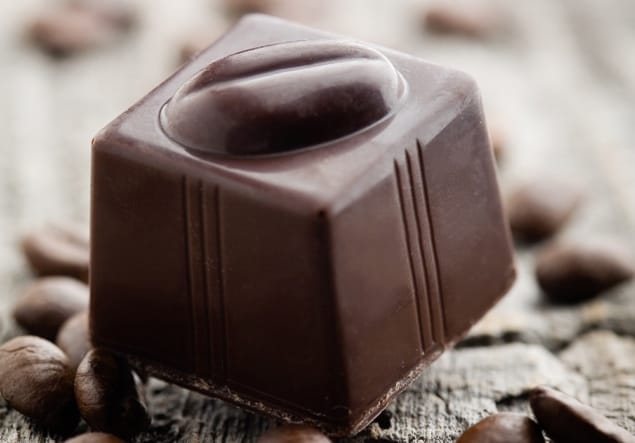
New insights into the physics of chocolate production have been gleaned by an international team of physicists, led by Wilson Poon at the UK’s University of Edinburgh. The researchers studied a process called conching, whereby a granular mixture of ingredients is transformed into a homogenous fluid. Conching plays an essential role in modern chocolate production and gaining a better understanding of the process could reduce the amount of energy required to make chocolate and other materials that involve complex mixtures.
In 1879 the Swiss chocolatier Rodolphe Lindt invented the conching process, whereby solid sugar, milk and cocoa powders are mixed with liquid cocoa butter. By subjecting the granular mixture to heat and hours of mechanical action, and adding oil dispersants at precisely timed stages, chocolatiers can transform the ingredients into a homogeneous, flowing liquid-solid suspension. This gives chocolate – which was grainy before conching was invented – its signature smooth texture.
Conching has been mastered for well over a century, but until now, there has been little knowledge of the physical mechanisms involved in the process. In their study, Poon and his team used a “simplified formulation” of chocolate and analysed the process in detail.
Irreversible deformation
The researchers identified and measured two key parameters underlying the process: the yield stress of the mixture (the stress at which the mixture begins to deform irreversibly) and its viscosity when subjected to high shearing. They found that both values are controlled by how far the mixture is from its jamming volume fraction – the point at which the fraction of solids in the mixture becomes too high for the mixture to flow freely.
By studying chocolate making, we have been able to gain new insights into the fundamental physics of how complex mixtures flow
Wilson Poon

Hungry for solutions
In the first stage of conching, the team observed that mechanical action breaks down groups of solid particles. This raises the mixture’s jamming volume fraction, thereby increasing both the yield stress and high-shear viscosity in turn. After oil dispersant is added, the friction between the particles is reduced, further increasing the jamming volume fraction. Eventually, the jamming fraction becomes so high that the inhomogeneous, granular mixture transforms into a homogeneous fluid, where all solid particles are suspended evenly within the liquid.
The researchers say that their discoveries could lead to improvements in the efficiency of chocolate production. Similar processes like cement production and ceramic manufacturing could also benefit from the research. “We hope our work can help reduce the amount of energy used in the conching process and lead to greener manufacturing of the world’s most popular confectionery product,” Poon says. “By studying chocolate making, we have been able to gain new insights into the fundamental physics of how complex mixtures flow.”
The study is described in Proceedings of the National Academy of Sciences.



